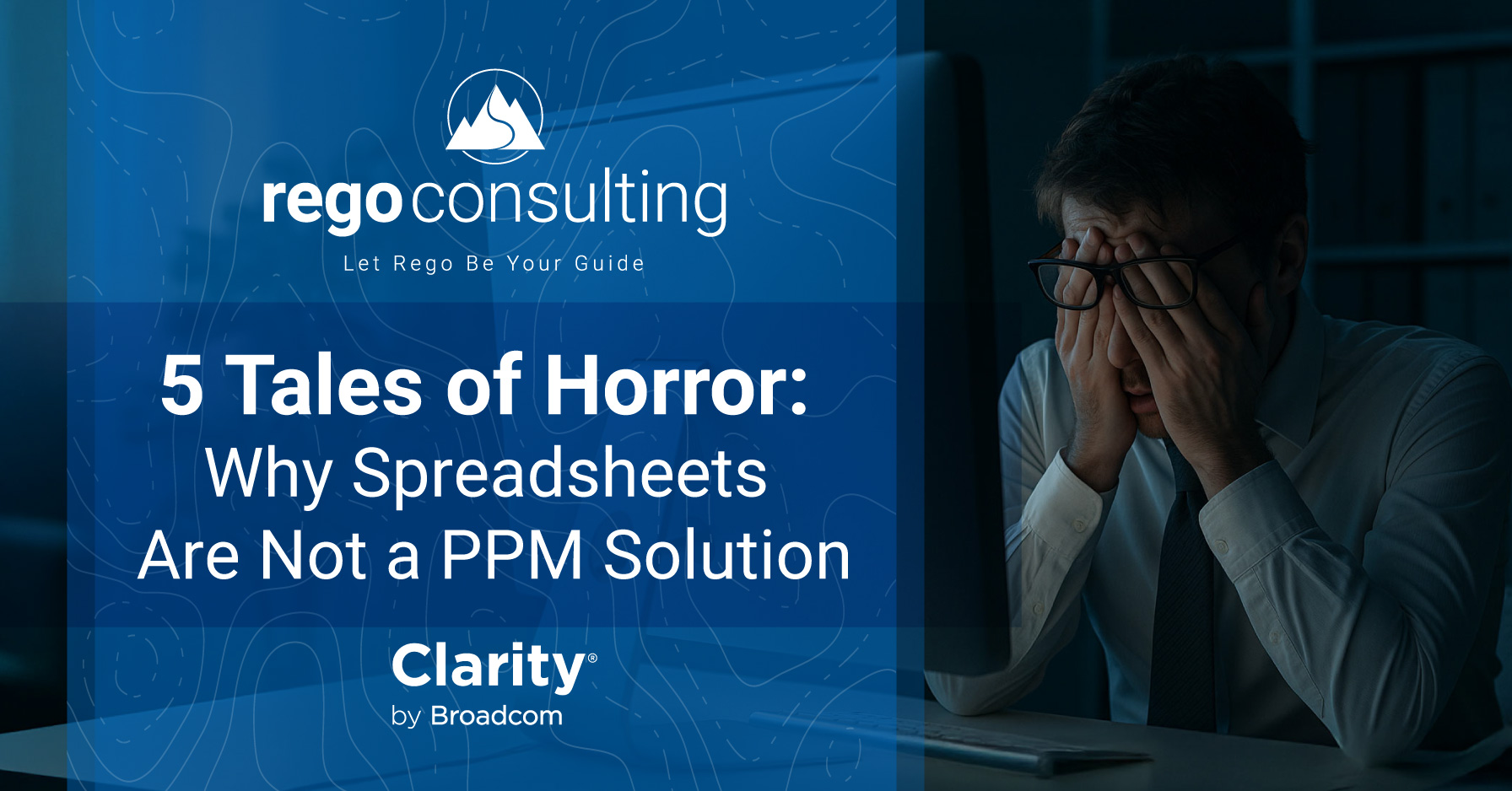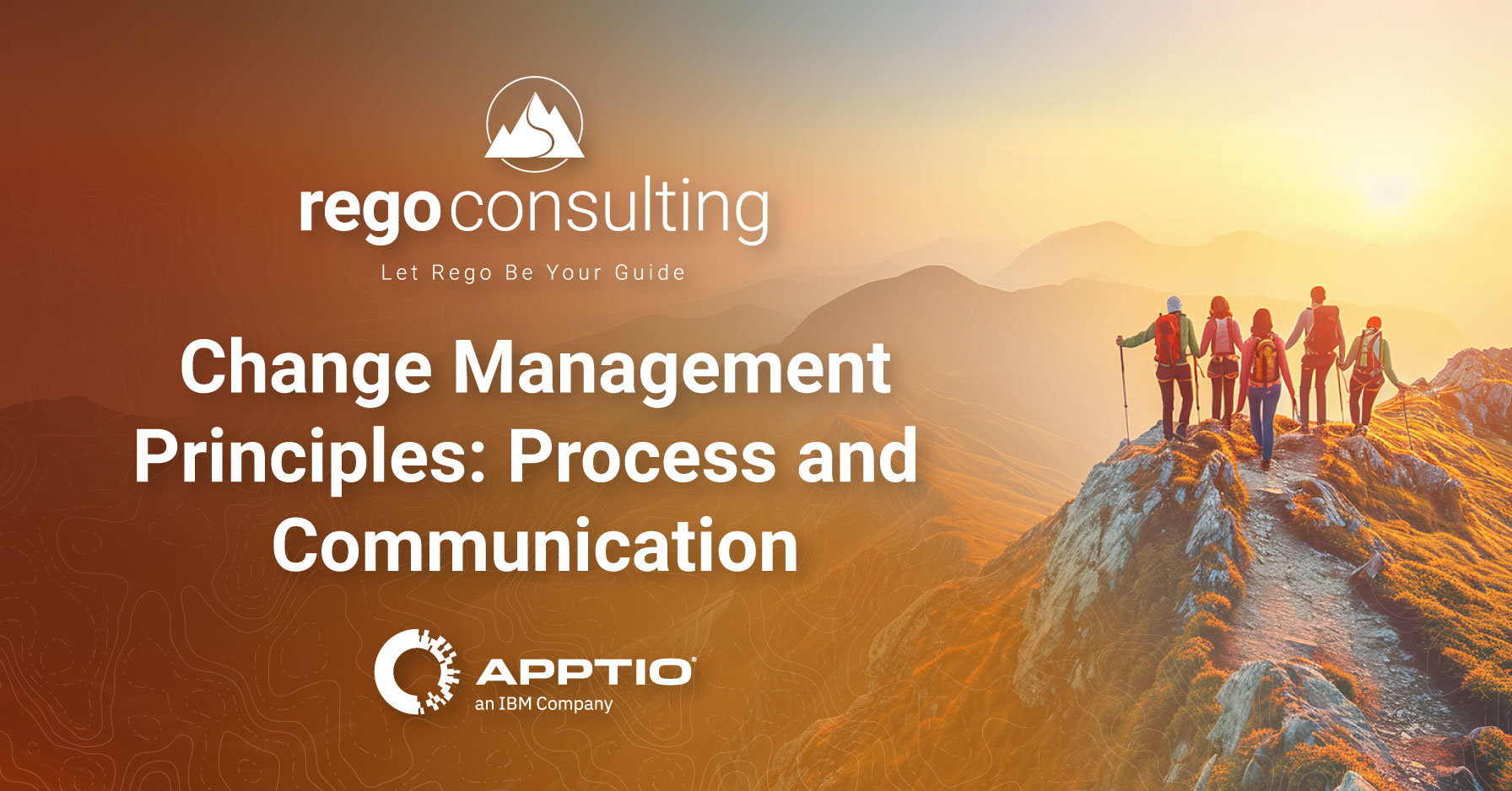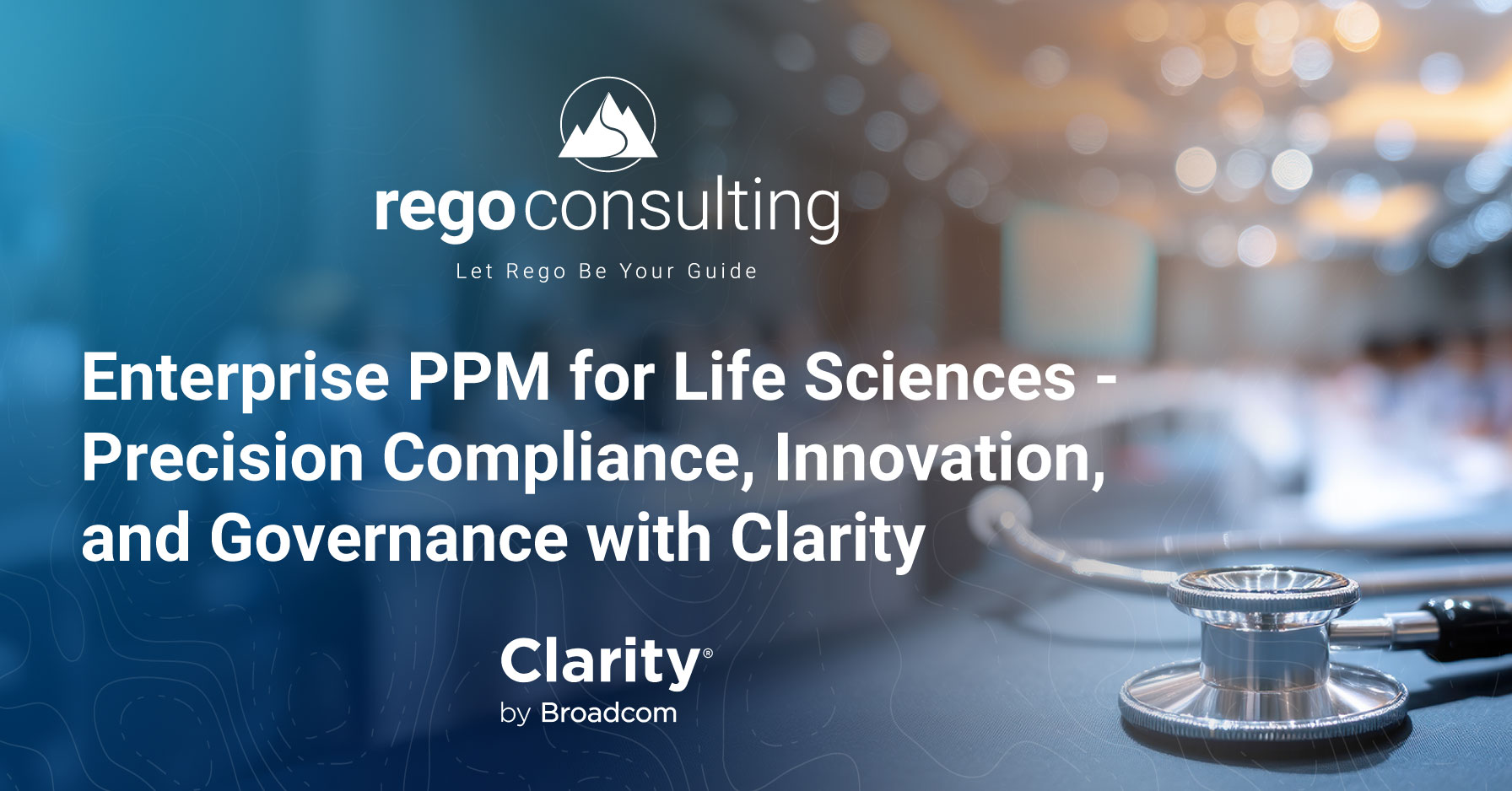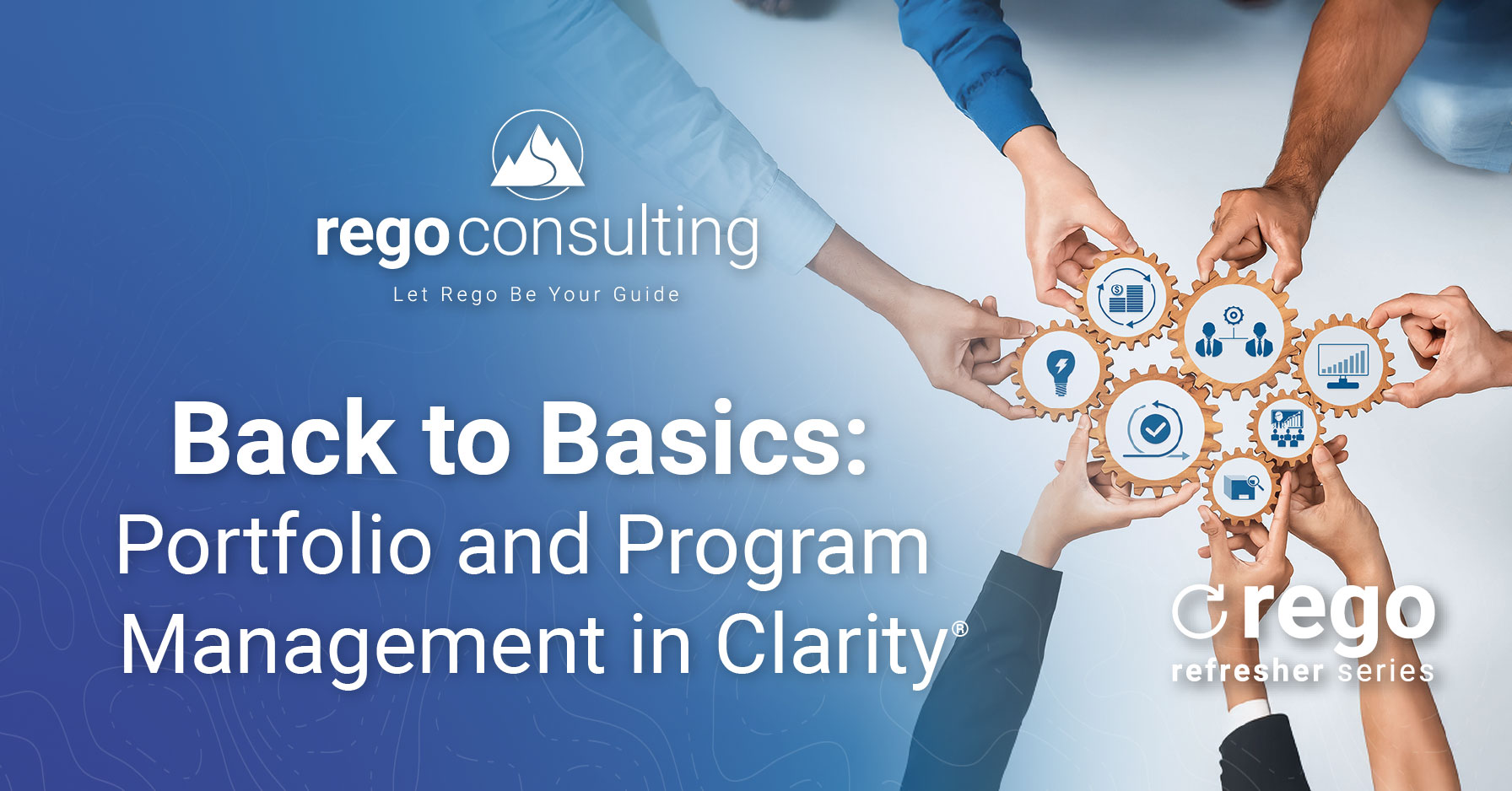
Making Space for Innovation
The demand for business innovation has never been higher, but how can we accomplish this without breaking the bank? Innovation doesn’t have to be expensive or difficult when we optimize the tools we already have to drive success.
These days, IT leaders are asked to do much more with less. The current shift towards business agility provides us with opportunities that didn’t exist five-to-ten years ago.
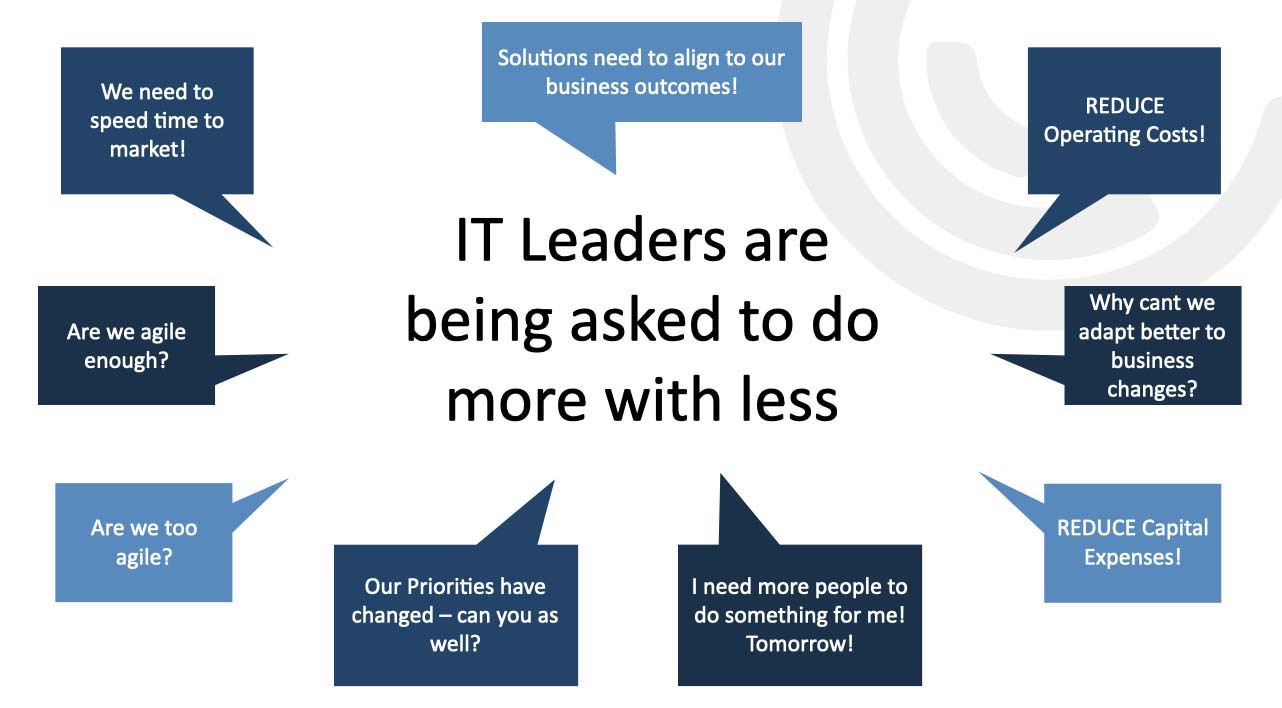
Fortunately, there are proven approaches that help us deliver the results we need.
- Become better partners with the business
- Measure IT outcomes in business terms
- Make time for innovation
- Get the business more involved in IT decisions and processes
- Proactively report status and financials
Development teams and architects are no longer the order takers—they are strategic partners driving solutions based on demands. We need to quantify their value in business terms. Today’s IT business landscape relies on our ability to change direction quickly and pivot on new opportunities.
Innovation is a central piece of our long-term strategy. We can leverage existing assets like people, processes, and technologies to invest in innovation wisely. This knowledge equips us with options that won’t stress the budget.
Empowering Innovation
We treat our employees like entrepreneurs, and empower idea-sharing across our organization. A connected enterprise is driven by integration and collaboration.
When we connect systems and teams, we eliminate friction caused by lack of communication and misunderstandings. To maximize the potential of existing assets, we consider what tools we already own that we can leverage, change, or improve to add greater value. How can we capture the best ideas?

Letting our innovators know that their ideas have been heard reinforces the value and impact of their contributions. By decentralizing the vetting of ideas, we open up opportunities for communication. A log of these ideas should be available to everyone.
We use the VOCE approach (Voice of the Customer via the Employee) to generate winning solutions. VOCE taps into useful feedback from the clients we serve. We reward those wins to create a culture of investment.
Demand Intake and Management
Giving resources a voice creates stability, which leads to direct, long-term HR benefits. People crave structure. We can boost morale by simply reducing the amount of chaos and stress through a structured demand intake process. The more hurdles people have to go through to submit an idea, the less likely they are to follow through. We keep things simple, and solicit the minimal amount of information we need to know in order to evaluate an idea.
We can use an all-user entry approach or a moderated entry approach, both of which have pros and cons. It’s ok to move between the two as our demand management process matures. For more information about demand management, check out our blog, which covers strategy and best practices.
A PMO has the responsibility of capturing the PM’s voice and experience. We think of our PMs as customers of the tool. Agile product owners encapsulate this implicit responsibility in their roles.
Gamify Creative Solutions
One company we recently worked with held a solution showcase to grow a culture of enthusiasm for innovation and project-to-product thinking. They brought together development teams and architects from across the enterprise, giving them a single mission: “Come up with a good solution for us that will positively impact the business.” Teams developed a business case around their solutions and created prototypes for leadership. The solution showcase provides a way for employees to be involved in producing strategic benefits.
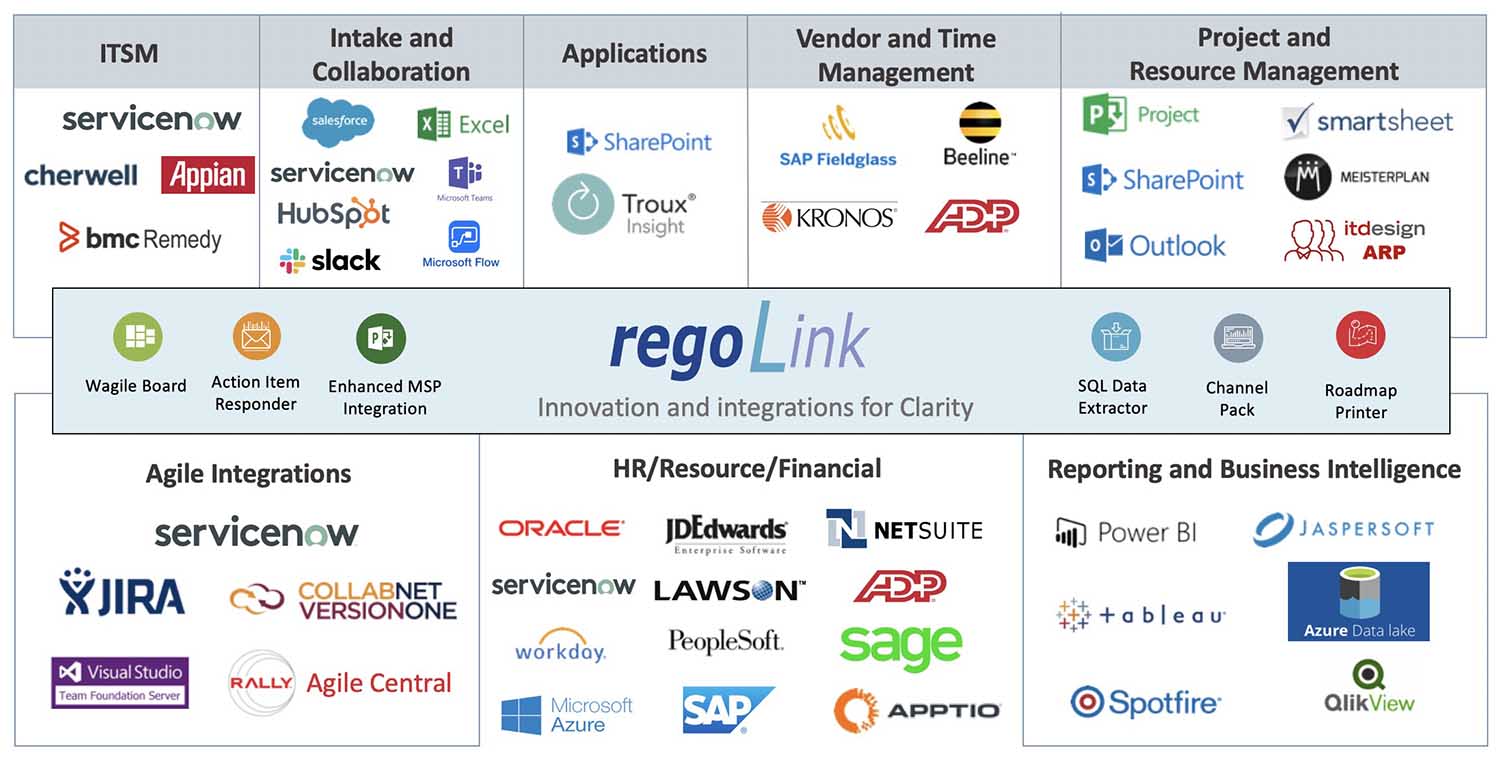
RegoLink is Rego’s line of business dedicated to innovation. We collect ideas from consultants, who collect ideas from clients. RegoLink has led to dozens of pre-built innovations that provide support through tool integrations and value-adds, like our recent integration for SharePoint and Clarity PPM document management. See our RegoLink solutions here, and check out the latest Rego innovations in our webinar.
Making Connections
Interconnectivity between people and tools is a proven way to increase speed and agility. Every integration provides extended benefits that can be quantified in financial terms. Best of all, the cost of introducing integrations is lower than ever.
Rego’s integrations for PPM software allow interdepartmental connectivity. It’s common for departments to struggle with broader organizational dialogue. Agile-specific integrations are becoming increasingly popular to help bridge this divide. We govern and report from our PPM tool, execute in our Agile tool, and customize our workflows by connecting to multiple tools at once.
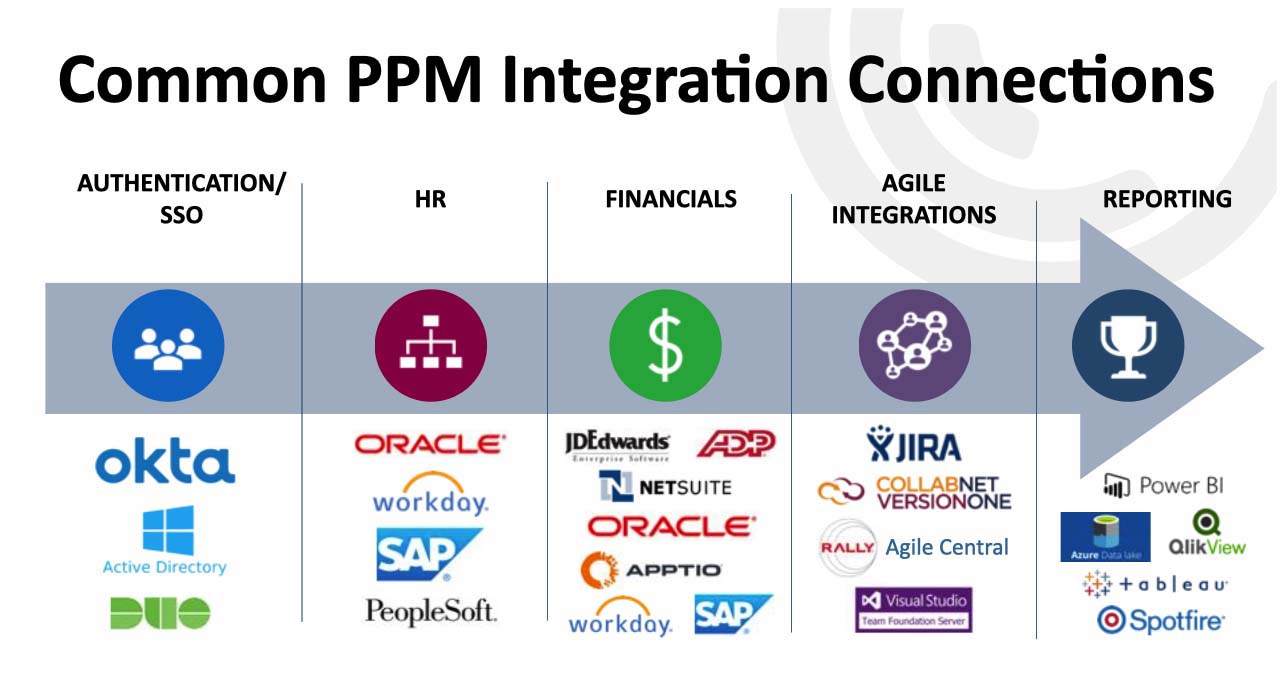
We promote agility among our teams by reducing the amount of maintenance work required. Team apps like Slack, Trello, and Microsoft Flow provide a productive space for ideation.
Smartsheet is one example of a cross-functional tool we utilize. We create our PPM projects and maintain schedules in Smartsheet. PMs make full use of its features and sync data back to our system of record as needed. Data can be updated to our governing repository on demand, or on a set schedule of five, ten, or fifteen minutes.
Innovative Leadership
Our technology supports connected teams by establishing a space for innovation. We enable teams with different approaches to hear each other, and create a coalition that guides them and keeps their eyes on the prize. We set clear objectives so that they can be ambassadors who propel an integrated approach.
It’s important to cultivate an organizational culture of feedback and learning through change, across teams, and in an integrated fashion. We ensure that everyone at our organization understands that we are invested in innovation and growth. That means that we continue to maximize existing assets, and think outside-of-the-box when it comes to leveraging in-house tools. We also invest in altering these assets when it adds value.
The first step in transforming our organization into an innovation incubator is sitting down with colleagues to review the heavy and light lift items. Below, we see a visualization that ranges from simple to complex in terms of effort required. It’s a good idea to plan our transformation the same way we would plan a household move.
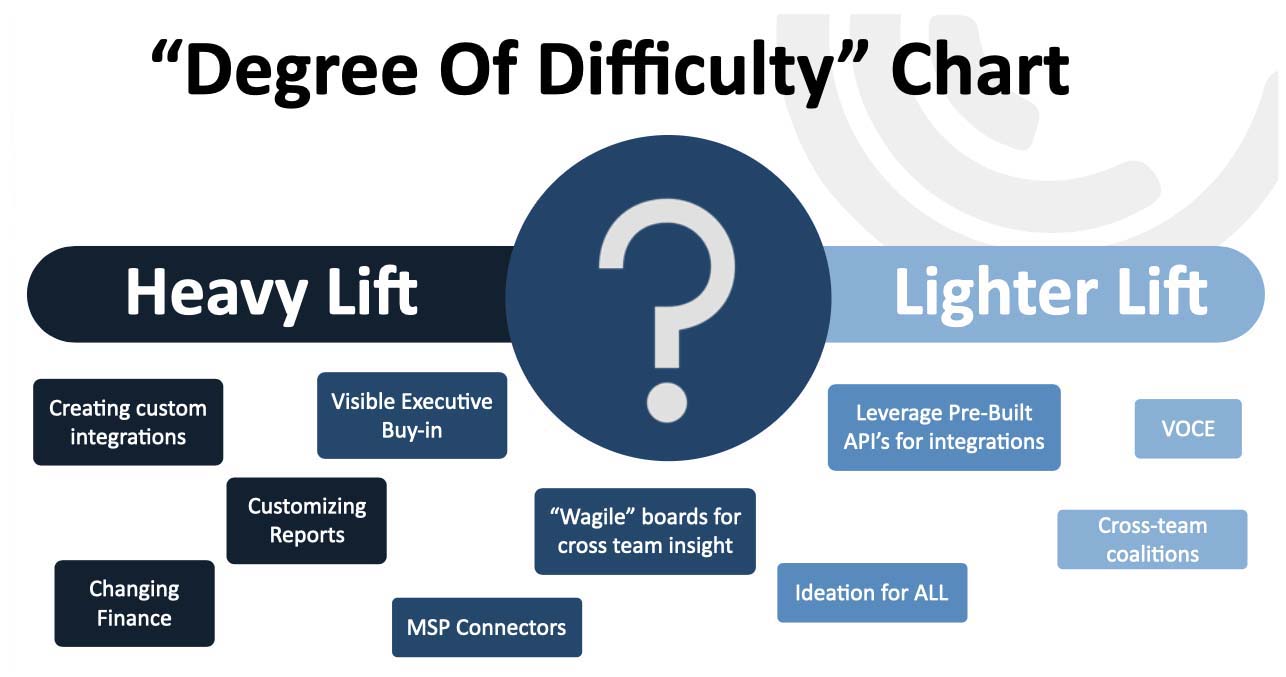
We pursue both heavy lift and light lift items based on the value they’ll bring and realistic expectations of what we can accomplish. This helps us lay out a roadmap for the future and drives innovation in our business.
A special thanks to our talented expert guides.

Alyson Poston is the Chief Customer Success Officer/SVP at Rego Consulting. With more than 20 years of experience in Clarity PPM, Alyson began at CA/Broadcom (formerly Niku) as a trainer and consultant. She is also an amateur metalsmith who enjoys working in her art studio when she’s not creating positive client experiences in the PPM space.

Wes McCoubrie is a Senior PPM Consultant at Rego Consulting and a Solution Architect with twelve years of experience. Wes has led PMOs and helped establish tools and governance teams at companies across industries.
Learn from Rego
Rego’s 200 expert guides have helped more than 400,000 users master PPM, financials, resource management, roadmapping, and Agile teamwork. Contact us for assistance or demos any time. We often offer free health assessments of existing implementations.

